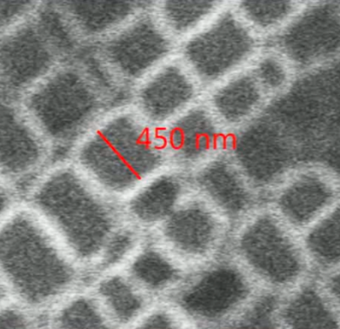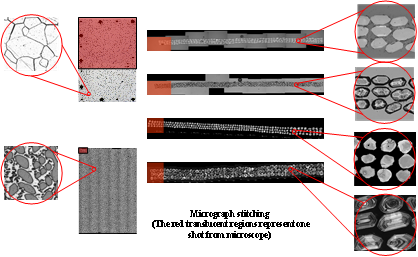High-throughput Materials Characterization and Fabrication
High-throughput Materials Characterization and Fabrication







Wang Haizhou Professor of the China Iron & Steel Research Institute Group, and academician of the Chinese Academy of Engineering
Li Xiangyang Professor of the China Iron & Steel Research Institute Group, and expert on the Thousand Talents Plan
Jia Yunhai Professor of the China Iron & Steel Research Institute Group
Ban Xiaojuan Professor of the University of Science and Technology Beijing
Lu Yonghao Professor of the University of Science and Technology Beijing
【Chief Members】
Wang Haizhou Professor of the China Iron & Steel Research Institute Group, and academician of the Chinese Academy of Engineering
Li Xiangyang Professor of the China Iron & Steel Research Institute Group, and expert on the Thousand Talents Plan
Chen Zhongwei Founder of Focus e-beam Technology Co., Ltd., and electron microscope expert of international reputation
Jia Yunhai Professor of the China Iron & Steel Research Institute Group
Ban Xiaojuan Professor of the University of Science and Technology Beijing
Lu Yonghao Professor of the University of Science and Technology Beijing
【Research Background】
The development of new materials and improvement in their quality have placed greater demands on material characterization technology. However, the existing process for material modification and new material development mostly starts from experiments in a trial-and-error manner with long cycles, making the discovery of new materials too slow. With the development of the discipline of Materials Genome Engineering (MGE), high-throughput characterization and high-throughput preparation methods could effectively accelerate the R&D of new materials. Based on a new concept and model of MGE, it is possible to greatly accelerate the discovery and modification of new materials, and to control and promote their quality. This is expected to shorten the R&D cycle and reduce the R&D cost (both) by 50% for new materials.
【Research Objectives】
The team is focused on the demand for mapping characterization of high-throughput, cross-scale, and multi-parameter statistics for large materials and is committed to developing and upgrading a series of high-throughput, cross-scale multi-parameter characterization technologies and devices. These are expected to operate at microscopic (nm), mesoscopic (μm-mm), and macroscopic (cm) scales, and to conduct high-throughput computing and self-learning research on statistical mapping data, carrying out research on high-throughput micro-manufacturing new methods for multi-component composite block materials. They would also be used to integrate high-throughput characterization and high-throughput micro-manufacturing technology to explore modification of high-performance structural materials such as high-temperature alloys, ultra-supercritical heat-resistant steels, and marine steels to guide the optimization design of production processes.
【Main research areas】
1. Cross-scale, high-throughput in situ statistical distribution characterization of material compositions
2. Cross-scale, high-throughput in situ statistical distribution characterization of material structures
3. Cross-scale, high-throughput in situ statistical distribution characterization of mechanical properties of materials
4. High-throughput statistical mapping characterization system, inverse reconstruction, and reversal design
【Significant Research Progress】
1. Study on in situ statistical distribution characterization of large, cross-scale, high-throughput scanning electron microscopy
Based on the field emission scanning electron microscope developed by Professor Chen Zhongwei with proprietary intellectual property rights, the team jointly developed high-throughput characterization equipment and technology for high-throughput cross-scale statistical distribution characterization in MGE. The equipment incorporates a home-designed high-brightness field emission electron source and direct electron detectors equipped with a reverse acceleration detection technology. It also includes a parallel multi-channel processing technology involving a high-speed, image central processing unit to achieve high-speed image acquisition. Moreover, it can simultaneously acquire the images of both secondary electrons and backscattered electrons at the same position at a 100 times faster acquisition rate than with a traditional scanning electron microscope while ensuring the same image quality. This makes it a powerful analytical tool for high-throughput characterization of microstructures. To date, the team has performed large-scale structure characterization of nickel-based single-crystal high-temperature alloy materials and realized high-speed data acquisition of the γ' phase at the full surface of a 12 mm single-crystal alloy. It obtained the total distribution information of a monomer γ' phase with a size of about 450 nm and, through in situ statistical characterization of the data, analyzed the quantitative distribution relationship of different-sized γ' phases on dendrite stems and between dendrites.



Figure 1 Single-crystal high-temperature alloy in full field of view and a γ' phase visually magnified
2. Feature fusion and extraction technology for video images of material microstructure
The team developed an image generation technology specifically for video streams. It allows rapid collection of microscopic data through video capture. This makes possible image stitching of key video frames through feature matching, fusion of the clear parts of the image based on multi-focus image fusion algorithms, and solution of the image blurring problem caused by uneven surfaces of the material. The team developed an image stitching technology based on feature search by integrating search-area increase strategies and GPU programming. The stitching speed and stability exceed those of commonly used software (AutoStitch, Photoshop, and ImageJ) in the field and has reached the level of world leadership. To overcome the limitations of low accuracy and slow speed in the dendritic feature extraction from the serial section images of aluminum-lanthanum alloys, the team developed a deep learning-based image segmentation method incorporating three-dimensional features of the material, which realizes image feature extraction. Given that the severe noise (scratch, modification, and other noise) in the serial section images of pure iron grain structures prevents traditional image processing methods from accurately extracting the grain boundary, the team uses a transmission and segmentation technology of serial section images to improve the accuracy of grain boundary extraction.

Fig. 2 Illustration of the parallel stitching of a group of horizontal microscopic images of the material
